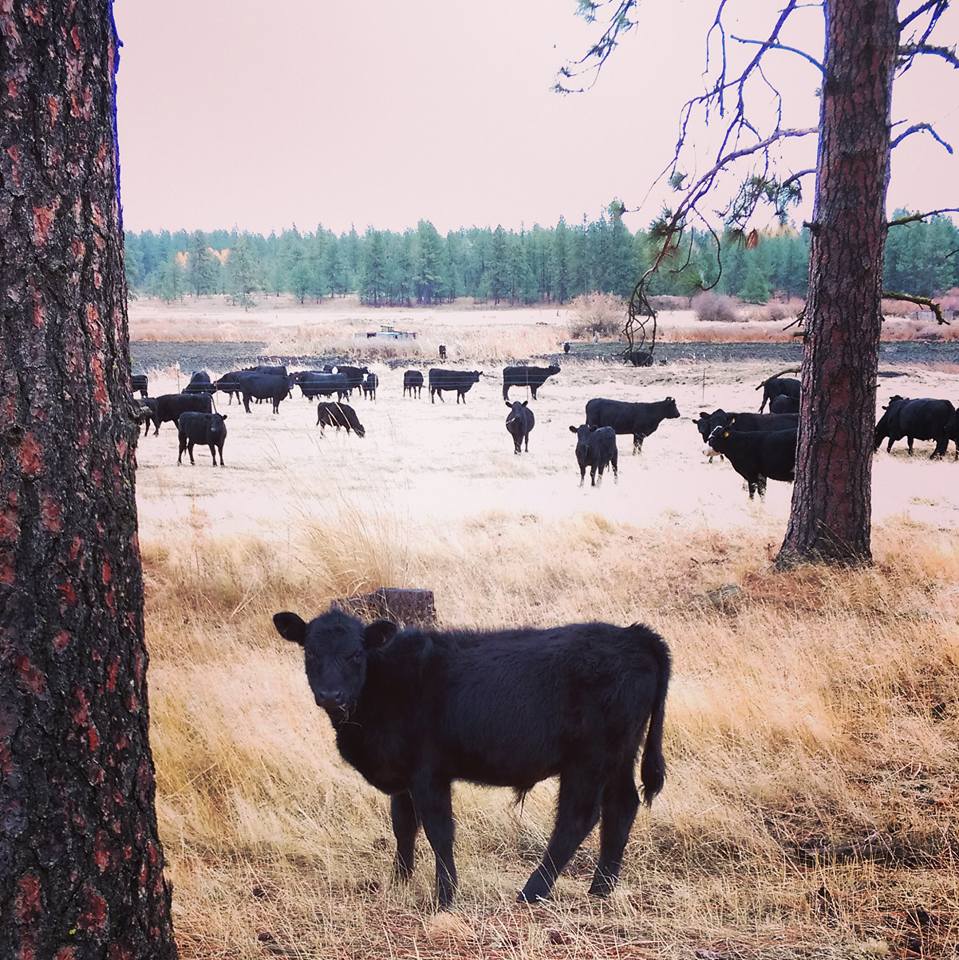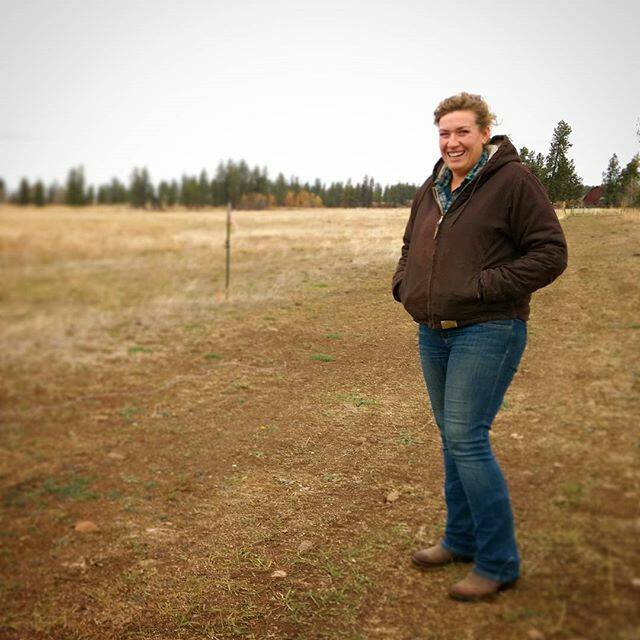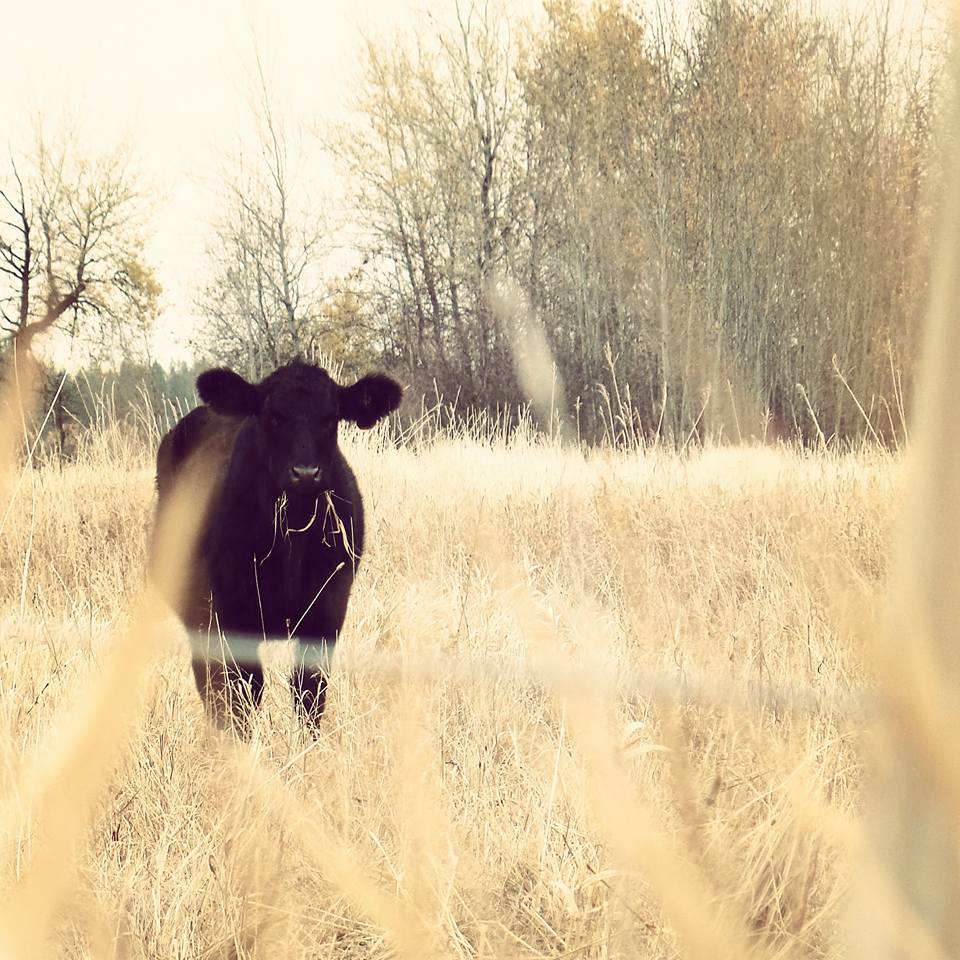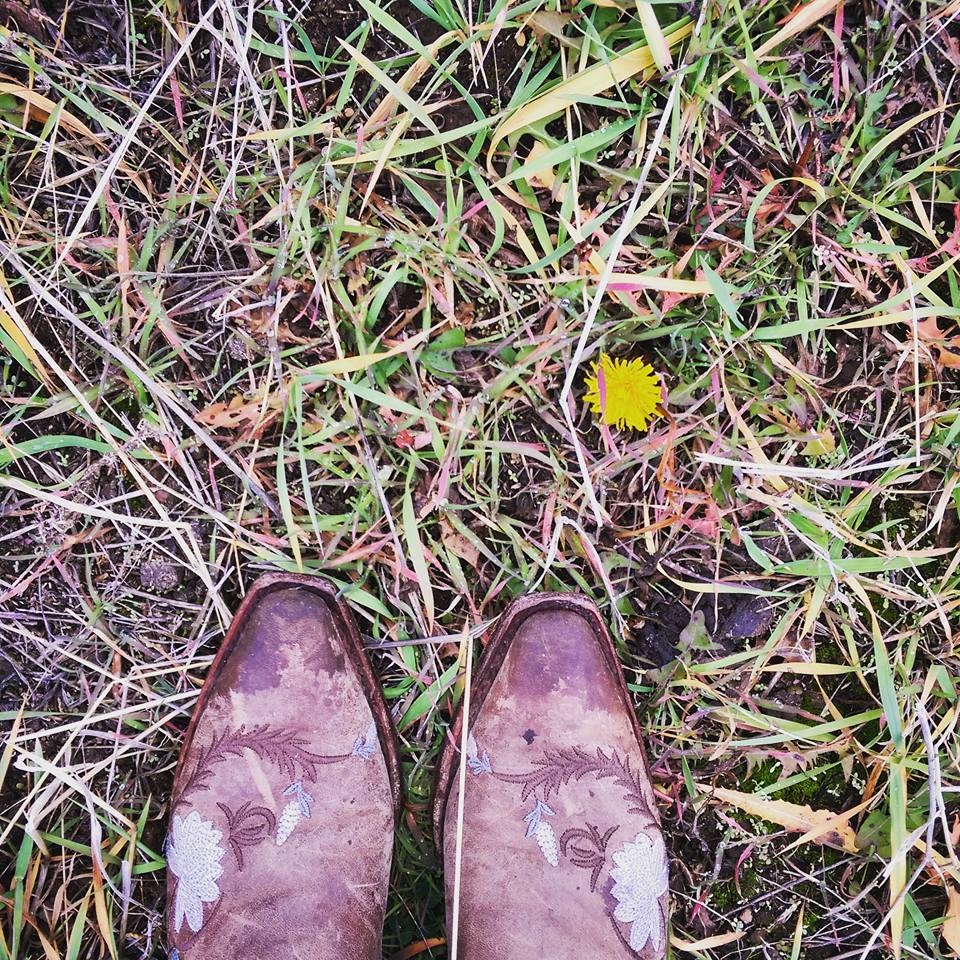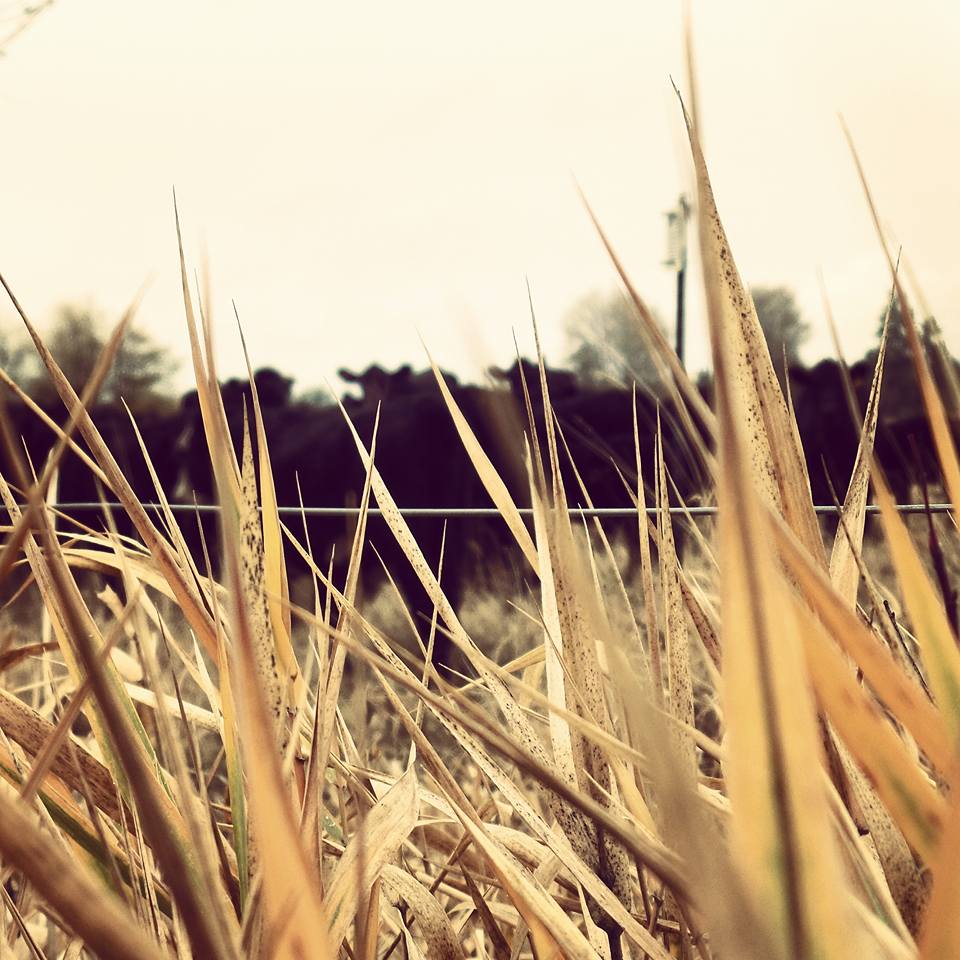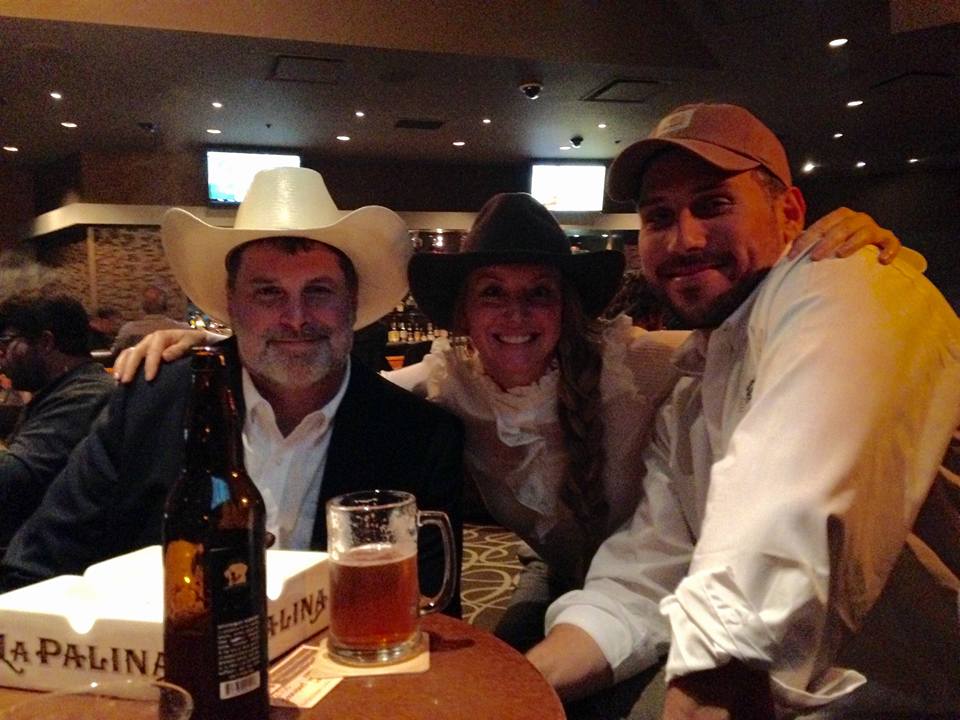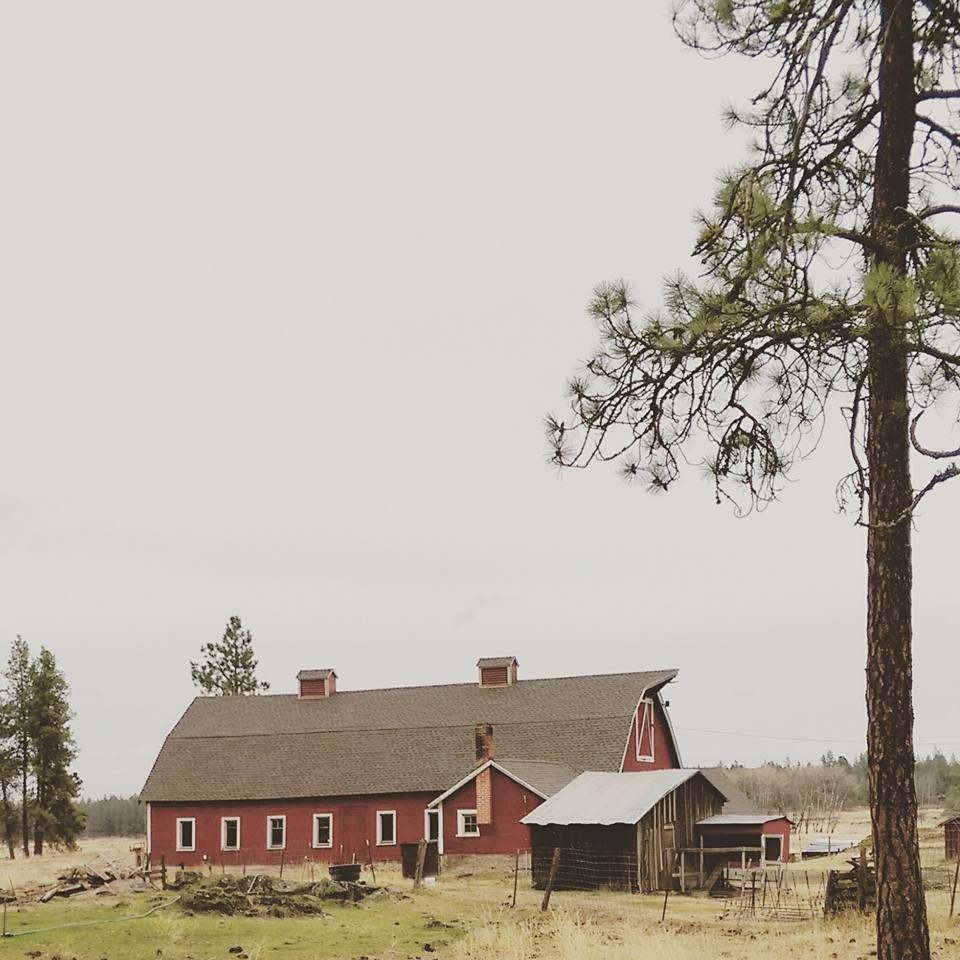Poop and Flower Petals on my Boots
While I was sad to miss my umpteenth Halloween in Ashland because: working, I had a great time reaching out to Eastern Washington cow folk. Last weekend I got to tap into Allan Savory's Holistic Management approach to raising beef at the Lazy R Ranch outside of Spokane, Washington. I spent a good chunk of Saturday tromping through poop and seeing on the ground trials of intensive grazing methods. Super amazing how beneficial cows can be for range lands (and BEES) when done right!!
Lazy R Ranch is a fourth generation operation (see adorable pictures of the family here). I met rancher Maurice Robinette after my talk to the attendees of the Cattle Producers of Washington / Northwest Farmers Union joint conference. I was very interested in learning more about the “Holistic Management,” he practices, so he invited me to come for a visit during my stay in Washington. The next day I hitched a ride with his daughter, and co-ranch manager, Beth Robinette, to the ranch after the conference.
In their words, “Today we face the increasing threats of desertification, biodiversity loss and climate change complicated by the need to feed billions of people. We depend upon agriculture to do this but currently we produce more eroding soil than food! The vast majority of land in the world is not used for crops. We believe that by the use of properly managed livestock in these areas, we can address all of those problems. The process we use to make management decisions regarding our land and animals is Holistic Management.”
As we walked the land, drove the dirt roads, and visited their handsome herd of cows, Beth described to me the Principals of Holistic Management:
Nature functions in wholes
You can’t control or change one thing in one area without having an impact on something else in another area.
All environments are different
It is crucial to acknowledge nature’s complexity and that an action can produce completely different results in different environments.
Properly managed livestock can improve land health
When domestic livestock is properly managed to mimic the behavior of wild herbivores interacting with grasslands, they can reverse desertification.
Time is more important than numbers
Overgrazing of plants is directly related to the amount of time the plants are exposed to the grazing animals and the amount of time that lapses between consecutive grazing events.
She also explained that as you design your management, a holistic rancher also considers current quality of life, and the future resource base you want to leave for yourself and upcoming generations. Make all of the sense to me!
So, where do bees come in to all of this? One third of the earth’s surface is grasslands, and 70 percent of the world’s grasslands have been degraded. My friends, there is not just grass in those lands, there are flowers, too!
First on the agenda for my visit to Lazy R, I got to walk their test trials for holistic “high density, intensively” grazed land, vs. “low density, long duration” grazed land. The low density trial let two cows roam freely on four acres of grassland for 10 weeks from August to October. The high density grazed ALL of their cows and calves (at 100,000 pounds per acre) on the same acreage for just 24 hours. Instead of picking a choosing and wearing the grass to dirt, like the two cows did; the whole herd pooped, peed, and composted the grass down into the soil.
Compared to the bare, spindly land that the two cows created over 10 weeks, it was completely amazing to see the soil quality, green thick ground cover, and FLOWERS that the whole herd had created in just 24 hours (which is then given a rest period of 90 days before grazing again). So, this is where the bees come in. Holistic management of beef = flowers for bees. Beth let me know that the ranch is alive with flowers and bees all spring and summer long. They had hosted a beekeeper in years past, and he paid them “rent” with eight gallons of honey! In arid, deserty, Eastern Washington! I can imagine, if we could interseed and irrigate some of this land, the potential for bees and beekeepers could be phenomenal.
My recommendation is a mix of 1 pound per acre buckwheat, 3lbs field pea, 3lbs desi chickpea, and 3lbs chickling vetch (recipe courtesy of Colorado Potato farmer, Brendan Rockey), at JUST $10 per acre (order from Pheasants Forever at 1-844-SEED-NOW). This is a cow and bee friendly mix that is affordable, and will make fat beef and bees.
If you would like to learn more about Holistic Management, visit founder Allan Savory’s site here: http://savory.global, and watch his TED Talk here:
If you would like to learn more about Maurice and Beth’s ranch click here: www.lazyrbeef.com
If you would like to become a Holistic Manager yourself, contact the Pacific Northwest Center for Holistic Management here: http://pnchm.org
#winwinwin #growingforbees


